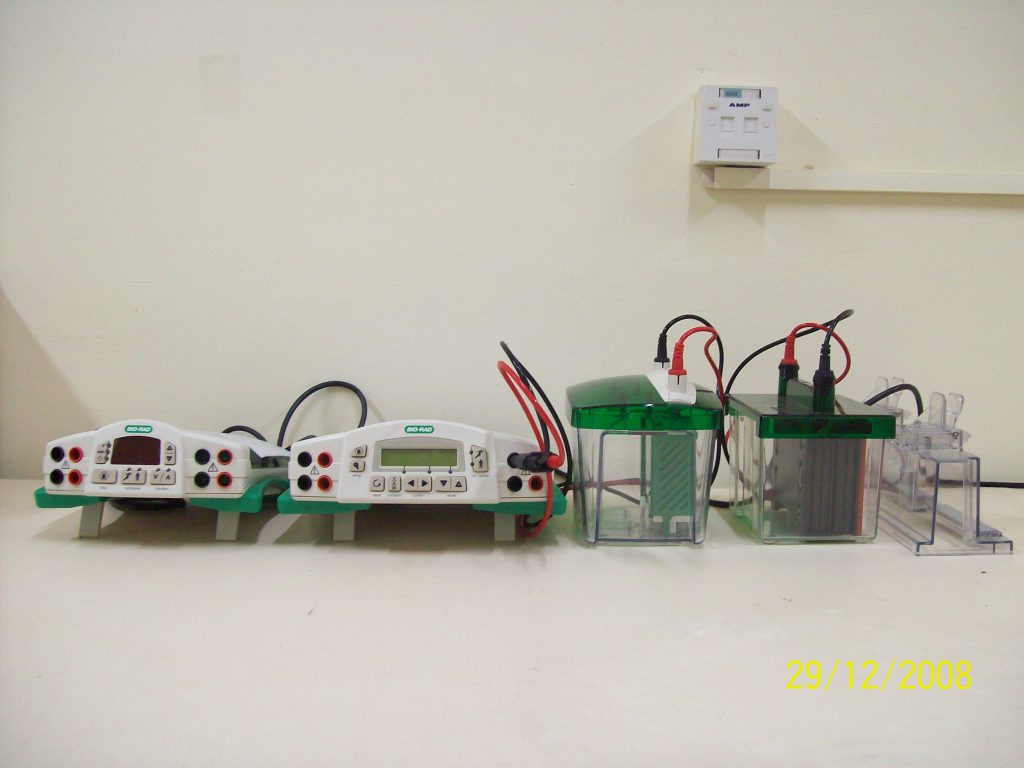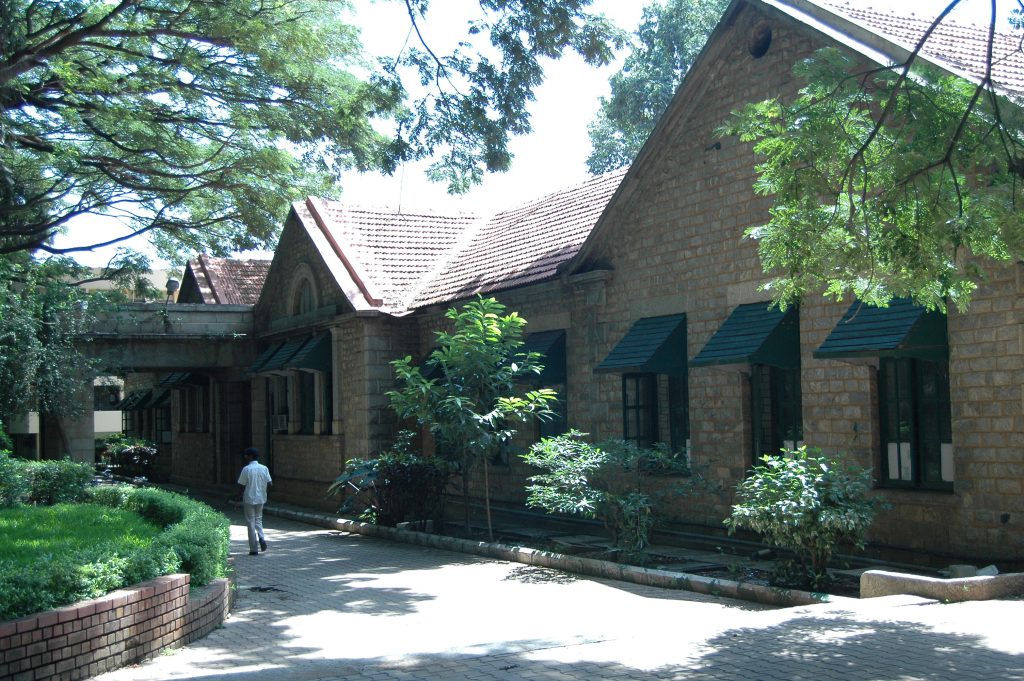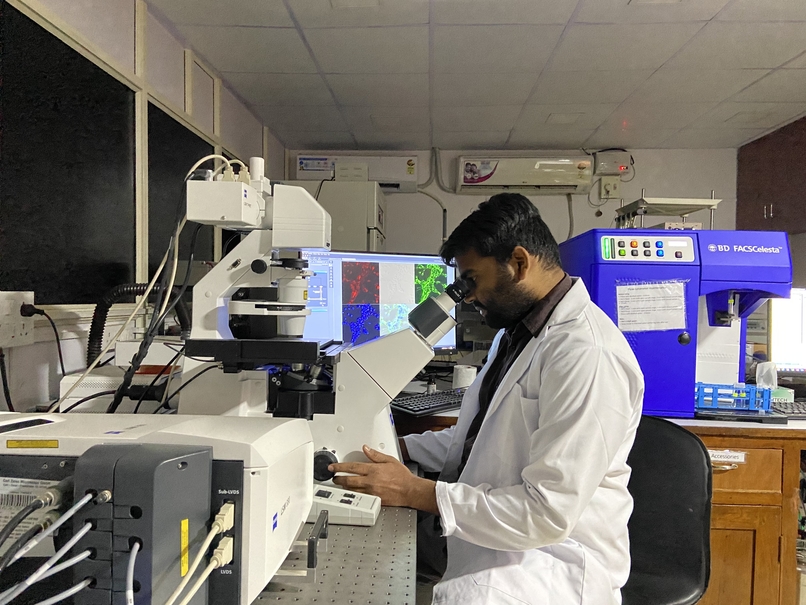A behind-the-scenes look at the transformation of an empty space into a full-fledged research lab

(Photo: Manoj Sudhakaran)
Setting up a new lab can be an exhilarating episode in the career of a faculty member. But it can also be a long and arduous journey, one that needs fellow travellers — often this caravan includes graduate students, research assistants, postdoctoral fellows, and other lab members.
All faculty members, particularly those doing experimental research, have to set up a new lab at the start of their careers. But some have to do it again later in their careers if the focus of their research changes or broadens.
The research agenda of Govindasamy Mugesh, Professor at the Department of Inorganic and Physical Chemistry (IPC), took such a turn a decade ago. The scope of his research was expanding into the discipline of chemical biology. Though he had a fully functional chemistry lab, a complementary biology lab had to be built from scratch.
The inception
Mugesh joined IISc in 2002. In the early years of his research career, though he was pursuing chemistry projects related to biological systems, he had no plans to set up a biology lab. “[But] as we progressed, we realised that to address a problem in biology, we need to apply our knowledge of chemistry and work with real biological systems. That is when we first thought of having our own chemical biology lab,” he recalls.
“In 2008, we started by making a small cell culture room within our existing chemistry lab,” says Mugesh. The intention at that time was to work with seleno-proteins — proteins containing selenium — which are difficult to obtain. Until then, the group had been working with small synthetic molecules containing selenium. Now, he wanted to study actual proteins. To do so, he and his team had to culture bacteria in the lab and engineer them to make seleno-proteins.
“As we progressed, we realised that to address a problem in biology, we need to apply our knowledge of chemistry and work with real biological systems”
But soon, it became clear to Mugesh that he was constrained by the lack of infrastructure to make any meaningful headway in chemical biology research. “Since IPC did not have any extra space, I approached Prof Balaram, the then Director of IISc in 2011. He asked me to send a proposal of what work we intend to do.” Fortunately, around the same time, the Biochemistry Department was shifting to the new Biological Sciences building. After studying Mugesh’s proposal, Balaram suggested that he could use one of the empty labs in the old Biochemistry building. By 2012, the new lab space was ready and the cell culture facility was shifted here. This was also the time I started working in the lab and had the opportunity to see an empty room transform into a fully functional, well-equipped biology lab.
The journey
However, in order to get there, Mugesh first needed funds to buy some basic equipment. “Biology work requires more funding as compared to chemistry,” he explains. The funds he had obtained for his chemistry research were grossly inadequate. So he had to raise money, but for Mugesh, the challenge was even greater. “Ours was neither a biology lab, nor did we have any facility in our department to carry out major biology work — it was difficult to convince funding agencies that we would be able to carry out what we propose,” he says. But soon they started getting small grants from various sources — some from government agencies and some from industry. “Slowly the lab was being built,” recalls Mugesh.

Another hurdle was finding students who could carry out biological experiments. Surendar Reddy Jakka, a graduate student and chemist by training, was the first to venture into the world of biological research. He visited a few labs in the Biological Sciences Division to learn new skills. By 2014, a couple of more members joined the biology bandwagon, but they too were chemists. It seemed impossible to convince trained biologists to work with chemists in a department which barely had infrastructure to do biology.
And what’s more, even if students with a biology background wanted to work in the lab, they had to first get through the PhD interviews in IPC — not easy for a biology student to crack. “I realised that doing high quality chemical biology will be difficult with only chemistry students, and without having expertise in biology,” says Mugesh. So he started looking for opportunities to work with hardcore biology labs. “We collaborated with Prof Patrick D’Silva’s lab in the Department of Biochemistry, and Prof Amit Singh’s lab in the Centre for Infectious Disease Research (CIDR).
Changing fortunes
In 2015, Sharath BN, who had a Master’s in biology, applied for a PhD in IISc and qualified for the interview. All aspiring PhD candidates are allowed to appear for an interview in three departments. Having chosen the Biochemistry Department and Molecular Biophysics Unit as his top two preferences, he was searching for a third department at which to interview, when he stumbled upon the webpage of Mugesh’s group. He was intrigued and so selected IPC as his third choice. A few days before the interview, he met with Mugesh to learn about ongoing projects in chemical biology. “He attended the interview and the [interview] committee found him suitable,” says Mugesh. An offer was made to Sharath, which he accepted. “I had offers from a few other good institutes, but I joined here because I found the work very interesting. Many people discouraged me from joining a chemistry group, but I took a chance,” says Sharath.
“I had offers from a few other good institutes, but I joined here because I found the work very interesting. Many people discouraged me from joining a chemistry group, but I took a chance”
By 2015, the biology lab became reasonably functional. In addition to having a graduate student with a biology background, the rest of the team was also well-trained in cell biology techniques by then. Around this time, the collaborations with other biology groups also began yielding results.
It was then that Mugesh decided to take a chance and embark on creating a full-fledged chemical biology lab. He, along with Sandeep M Eswarappa, Associate Professor at the Department of Biochemistry, submitted a joint proposal for a Science and Engineering Research Board grant to the Department of Science and Technology, Government of India. “After an elaborate peer review, within India and abroad, our project was accepted. We got significant funding for five years — generally funds are given for three years. This gave a huge boost and allowed us to establish a biology lab for studying endothelial dysfunction [a type of coronary artery disease],” says Mugesh about the pay-offs of his decision to apply for a grant appropriately called the High-Risk High-Reward Grant.

There was more good news. Mary Sarkar, a project assistant with more than 30 years of experience, joined the lab and took over the responsibility of maintaining the cell culture facility. “We bought new cell lines and started culturing them. With time, we added many types of cell lines. The challenge was to maintain the sterility and quality of the cell lines. We also started isolating cells from mammalian tissue — these are primary cell culture,” says Mary.
Mugesh was pleased with the progress. “I think we got the right people.” His vision of having a team of chemists and biologists was coming true. They started working on biologically important problems: the molecular mechanisms underlying disease conditions like endothelial dysfunction, neurodegeneration, and cardiac complications.
Mugesh illustrates the kind of questions his team began addressing with the example of their research on a class of molecules found in living cells known as reactive oxygen species (ROS). These molecules have both beneficial as well as harmful effects. It is therefore important that their levels are regulated. The crucial task of scavenging for excess ROS is performed by proteins known as antioxidant enzymes. The chemists in the group have synthesised antioxidant enzymes for the study. “We are looking at the molecular level mechanism of what roles ROS play during a pathological condition, say in neurodegeneration, and whether we can use our artificial enzymes to regulate the level of ROS in such cells,” elaborates Mugesh.
Other pressures
But the journey to establish a new lab and research agenda has been far from easy. Besides the sweat and tears that went into raising money and building a new lab, there were several other emotionally taxing challenges lab members had to deal with.
For one, building the new biology lab required time. But time is also of essence for PhD students. The pressure of the ticking clock started mounting. They also encountered difficulties in executing experiments. At times, the experiments yielded counter-intuitive results. Because they spent a considerable amount of their time helping set up the new lab, these setbacks often felt overwhelming. As Surendar recalls, “All of it took more time than usual, but [my] scepticism started when I encountered failures in experiments. I started worrying about how I will finish my PhD, or whether I will finish it at all.”
Sharath, a biologist pursuing his PhD from a chemistry lab, had a different concern, one that continues to bother him. “In India, at many places we still have a very traditional mindset. Most jobs seek subject specialists, and someone from an interdisciplinary background may not fit into either of the areas,” fears Sharath.
Yet another aspect of research that the interdisciplinary group had to work on was to improve communication between the chemists and biologists. “The key to a successful interdisciplinary work is constant communication between people working on each aspect. Both should share knowledge, and both should respect and learn from each other,” points out Vijayakumar Govindaraj, a biologist who is a senior postdoctoral researcher in the lab.
Fruits of labour
Nevertheless, the toil of setting up the biology lab, in spite of all the hurdles and setbacks, has paid rich dividends. There are several interdisciplinary projects in chemical biology underway and multiple important papers have already been published.
Mugesh elaborates on why he believes his lab has tasted success in just a few short years: “We decide the specific biological problem we want to address, then think back to identify what type of molecules will help us address it and make those. Even if the biology experiments do not produce expected results, they help gain insights — something the chemistry wing then uses to modify or redesign the molecules.”
“Even if the biology experiments do not produce expected results, they help gain insights — something the chemistry wing then uses to modify or redesign the molecules”
Surendar too credits the group’s success to the nature of research it pursues. “We may not always get the results we wish for, but still there are many other clues.” He believes that having expertise in both chemistry and biology allows them to explore such clues easily leading to novel findings.
Surendar’s point is highlighted by a discovery made by the team in 2018. Researchers in the group observed how a simple chemical modification enhanced the cellular uptake of a species of small synthetic molecules. Surendar, who knew how to make bacteria express non-natural proteins, immediately decided to apply the idea to a biological system. He was able to induce the expression of a modified green fluorescent protein (GFP) by bacteria. The chemically modified GFP, unlike the wild type, could enter cells.

in the new chemical biology lab (Photo: Ekta Chauhan)
Sharath identifies yet another reason for the success of the team: having their own biology lab helps overcome some practical limitations associated with collaborating with another lab. “Doing biology work is both money and human resource intensive. Thus, if we approach another lab for collaboration, even if they are interested, they may not always have the resources to start working on our project immediately, leading to delay,” he
argues.
There have been other personal rewards for those who have been part of the journey. The biggest of them is experiencing the excitement of discovery, especially in a new field of scientific inquiry. “I get immense joy while exploring something new — I feel like I am the first person in this world observing such a phenomenon occurring in nature,” Surendar says. “I got a lot of freedom to explore and come up with new ideas. This is how I envisioned doing research — this has made me confident and courageous,” adds Sharath, who cherishes the unconventional career choice he made.
Lessons learnt
My inexperienced younger self used to harbour a misconception — all it takes to achieve a worthy scientific feat is a brilliant idea. When I read or heard a success story of scientific research, little did I realise that the scientific pursuits of curiosity, knowledge, creativity, or innovation are mostly built on a strong foundation of relatively not-so-scientific endeavours. These include procuring infrastructure, arranging funds, training people, and maintaining a functional laboratory. A good scientific publication is like the tip of an iceberg. But there is a lot of ‘not-so-scientific’ work that goes on behind the scenes in order to publish in a good quality journal, much like the big chunk of the iceberg that is hidden from our view.
My experience has taught me yet another important lesson. Some researchers may have been wary of spending time and energy to deal with the practical concerns of establishing new cross-disciplinary research projects. This, in their view, may come at the cost of keeping up with the fast pace of scientific publications, meeting the conventional standards of success in research, or future professional prospects. I learnt that all of these concerns are entirely legitimate. But I also learnt that all scientists have to make their own judgement call in these situations, one which will
decide the course of their journey.
Sritama Bose completed her PhD at IPC in 2021 and was a science writing intern at the Office of Communications, IISc




